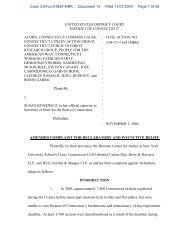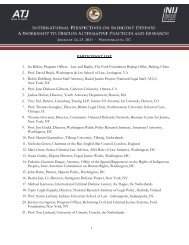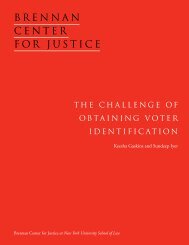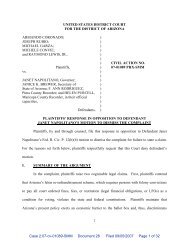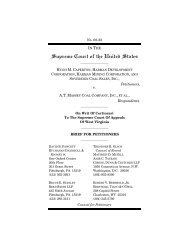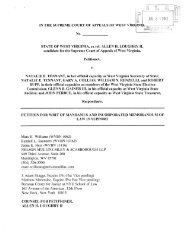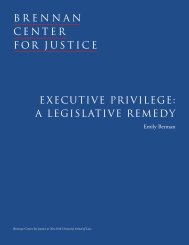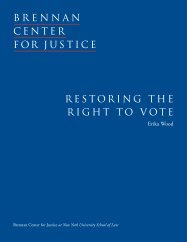THE NEW YORK STATE LEGISLATIVE PROCESS: AN ...
THE NEW YORK STATE LEGISLATIVE PROCESS: AN ...
THE NEW YORK STATE LEGISLATIVE PROCESS: AN ...
Create successful ePaper yourself
Turn your PDF publications into a flip-book with our unique Google optimized e-Paper software.
<strong>THE</strong> IMPACT OF <strong>NEW</strong> <strong>YORK</strong>’S DYSFUNCTIONAL <strong>LEGISLATIVE</strong> <strong>PROCESS</strong> 47<br />
tive drafting is confined to “Central Staff ” directed ultimately by the legislative<br />
leaders. The substantive negotiations, drafting, amendments, and resolution of<br />
different approaches occur behind closed doors among the Speaker, Majority<br />
Leader, and Governor and their staff. Because conference committees are rarely<br />
used to resolve disputes, if the two chambers do not pass identical bills agreed to<br />
by these leaders, the legislation dies. In other words, the committee system in New<br />
York fails to provide any independent laboratories for policy development with<br />
any realistic hope of producing the final legislation that becomes law. Nor does<br />
New York’s committee system provide a forum for members to debate and<br />
deliberate to ensure that favorably reported bills embody the best policy solutions<br />
to meet the public’s interests. For these reasons, New Yorkers are deprived of a<br />
significant value of legislative process, namely better legislation to address<br />
society’s complex problems.<br />
■■ INADEQUATE REVIEW OF LEGISLATION<br />
The lack of debate, deliberation, and review of legislation prior to a final floor<br />
vote has produced laws that include troubling errors or, in certain cases, laws that<br />
would not have been passed if they had received public or legislative scrutiny.<br />
These errors range from unnecessary grammatical and syntactical errors that<br />
may impair enforcement and judicial interpretation of such laws to massive<br />
financial expenditures that arguably do not benefit the people of New York.<br />
Although it is impossible to prove what would have happened with a different<br />
legislative process, the following examples suggest that more substantial committee<br />
involvement, significant debate and mark-ups, and compliance with the aging<br />
requirement rather than resort to messages of necessity could have led to a<br />
sounder outcome:<br />
■ Union Health Care Worker Package. The Health Care Workforce<br />
Recruitment and Retention Act of 2002 was passed after negotiations among<br />
the Governor, Speaker, and Majority Leader, without any debate or hearings.<br />
The Insurance and Health Committees in each house never saw or voted on<br />
the bill. The final bill was passed using a message of necessity, in the middle<br />
of the night, without any chance for the legislators to review it. According to<br />
Senator Thomas Duane (D-Manhattan), “maybe a half-dozen legislators and<br />
maybe 20 staff people saw it before it arrived on our desk [and] it was like a<br />
Bible. It was such a huge bill.” It was widely reported that Governor Pataki<br />
negotiated the bill, which provided $1.8 billion in raises for health care workers<br />
in SEIU Local 1199, in exchange for the political endorsement of Dennis<br />
Rivera, the president of Local 1199, in the 2002 gubernatorial race. In a year<br />
when the New York State budget featured a $5 billion deficit, critics asserted<br />
that this law represented a fiscally irresponsible result of pure politics and<br />
personal lobbying. While Governor Pataki received the union’s endorsement,<br />
Local 1199 and the hospital association with which it is affiliated contributed<br />
$281,200 to Assembly Speaker Sheldon Silver’s legislative campaign<br />
committee and $230,350 to Senate Majority Leader Joseph Bruno’s Senate



